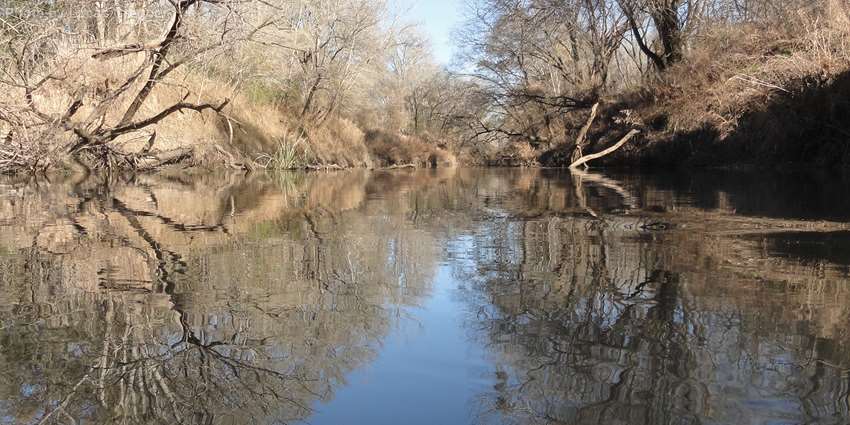The Texas Water Resources Institute (TWRI) Texas Riparian and Stream Ecosystem Education Program will host a workshop from 8 a.m to 4 p.m. Nov. 9 in Centerville for area residents interested in land and water stewardship, to benefit stream and riparian areas along the Navasota River.
The morning session will be on the third floor of the County Annex II Building, 155 N. Cass St. The afternoon session will include a walk and presentations along Boggy Creek.
The workshop, presented by TWRI and the Texas A&M AgriLife Extension Service office in Leon County, is free and open to the public.
According to Lucas Gregory, a TWRI research scientist, the workshop is being held in connection with watershed protection planning efforts for the Navasota River.
Gregory said the Navasota River begins in the Hill County and flows south through Limestone, Leon, Robertson, Brazos, Madison and Grimes counties before it drains into the Brazos River.
The Navasota River has been listed as an impaired water body since 2002 due to elevated levels of bacteria and currently does not meet the state’s designated standard of primary contact recreation, he said.
“The goal of the watershed-based plan is to promote the long-term conservation and stewardship of the Navasota River watershed by improving water quality, protecting the natural resources it contains and maintaining its economic viability,” he said.
Nikki Dictson, AgriLife Extension program specialist for TWRI, said the workshop will focus on the nature and function of stream and riparian zones as well as the benefits and economic impacts from proper functioning riparian systems.
“Riparian areas – the green vegetated land areas adjacent to the bank of a stream, creek, bayou, river or lake – are unique and important ecosystems that provide many benefits, including habitat and forage,” she said. “The goal of the workshop is for participants to better understand riparian and watershed processes, the benefits of healthy riparian areas and what resources are available to prevent degradation while improving water quality.”
Workshop presentations will be given by representatives of TWRI, the U.S. Department of Agriculture’s Natural Resources Conservation Service, AgriLife Extension, the Texas Parks and Wildlife Department and the Texas A&M Forest Service.
All attendees must RSVP by Nov. 4 to Dictson at 979.458.5915 or n-dictson@tamu.edu, or online.
The program will include a lunchtime presentation. A catered lunch is available for $10 with RSVP prior to Nov. 4, or participants may bring their own lunch.
Attendees can pay for lunch by credit using the online system or by sending a check payable to Texas Water Resources Institute and addressed to Dictson, 1500 Research Parkway, Suite 110, College Station, TX 77843-2260. They may also pay in cash at the event.
Dictson said the workshop is being offered for free thanks to program funding provided through a Clean Water Act nonpoint source grant from the Texas State Soil and Water Conservation Board and the U.S. Environmental Protection Agency.
Richard Parrish, AgriLife Extension agent for agriculture and natural resources, Leon County, said participants will receive a certificate of completion and appropriate continuing education unit certificates at the conclusion of the training.
The workshop offers many types of continuing education units, including three units — two general and one integrated pest management — for Texas Department of Agriculture pesticide license holders. Foresters and professional loggers can receive six hours from the Texas Forestry Association and 6.5 hours from Society of American Foresters. It offers one unit from the Texas Water Resources Institute, seven credits from Texas Floodplain Management Association, seven hours for Certified Crop Advisors, seven hours from Texas Board of Professional Land Surveying, and six hours for Texas Nutrient Management Planning specialists. The program may also be used for continuing education units for professional engineers.
For more information, contact Dictson or visit texasriparian.org or the riparian program on Facebook.



